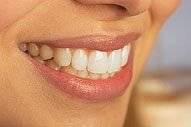A common misconception is demystified. Get the real story about this much maligned procedure that eases pain, rather than causes it...
Read More
Cosmetic Dentistry
 Overview
Overview
People choose esthetic dental procedures/surgery for various reasons—to repair a defect such as a malformed bite or crooked teeth, treat an injury, or just improve their overall appearance. Whatever the reason, the ultimate goal is to restore a beautiful smile.
For these and many other reasons, esthetic dentistry has become a vital and important part of the dental profession.
Common esthetic dental procedures can be performed to correct misshaped, discolored, chipped or missing teeth. They also can be used to change the overall shape of teeth—from teeth that are too long or short, have gaps, or simply need to be reshaped.
Some of the more common procedures involve:
- Bonding - A procedure in which tooth-colored material is used to close gaps or change tooth color.
- Contouring and reshaping - A procedure that straightens crooked, chipped, cracked or overlapping teeth.
- Veneers - A procedure in which ultra-thin coatings are placed over the front teeth. Veneers can change the color or shape of your teeth. For example, veneers have been used to correct unevenly spaced, crooked, chipped, oddly shaped or discolored teeth.
- Whitening and bleaching - As the term implies, whitening and bleaching, a rapidly increasing procedure, are used to make teeth whiter.
Which techniques should be used to improve your smile? A dental exam will take many factors into consideration, including your overall oral health.
-
“I'd Rather Have a Root Canal...”
-
Common Concerns About Root Canal Treatment
The term “root canal” can send shivers down spines. However, preconceived notions that root canal treatment is filled with pain and discomfort are nothing more than outdated myths. In fact, root canal treatment doesnât cause pain but actually relieves it.
Read More -
Trauma & Nerve Damage to Teeth
Answers to treatment of specific dental injuries — not only do injuries and their treatment vary, but they are also influenced by the type of tooth, whether baby or adult teeth, and their stage of growth and development. From chipped to fractured teeth, modern dentistry's answers are here and now...
Read More -
Whitening Traumatized Teeth
Bleaching a root canal or endodontically (endo-inside, dont-tooth) treated tooth involves placement of a bleaching agent into the empty pulp chamber of the non-vital, discolored tooth. Internal bleaching is a more conservative option compared to restoration with veneers or crowns, but is sometimes used to lighten teeth before the application of these techniques to prevent the discoloration of the natural tooth from showing through.
Read More -
Signs and Symptoms of a Future Root Canal
If a tooth becomes diseased or is injured its root canal can become infected. For most people, it is pretty obvious that they have an infection because of pressure, throbbing pain and an increased sensitivity to heat, cold, and chewing. However, you cannot always rely on the symptoms alone to decide whether or not you need a root canal. Only a thorough examination and x-rays can determine the need for root canal therapy.
Read More -
Root Canal Retreatment
Endodontic or root canal retreatment can be more complicated and technically challenging than initial treatment, and is generally carried out by root canal specialists, “endodontists,” dentists who have taken specialty training in the diagnosis and treatment of root canal problems.
Read More -
Accessory Canals
Accessory canals can sometimes be quite difficult to detect, clean and fill. While challenging, accessory canals can be successfully treated to save an affected tooth. This often requires the skills of an endodontist who can use advanced technologies such as microscopes and specialized filling techniques to treat these minute canals.
Read More -
Accidental Tooth Loss
Learn what to do if or when a tooth is accidentally lost or displaced as a result of an accident. The proper handling of a displaced tooth can be critically important.
Read More -
Sensitive Teeth
Tooth sensitivity is largely caused when a tooth's dentin is “exposed” (most often caused by gum recession). The dentin, which contains nerve fibers, will let you know that it is responding to heat, cold or touch the only way that it knows how — by saying “ouch.” Learn what steps to take to reduce tooth sensitivity.
Read More